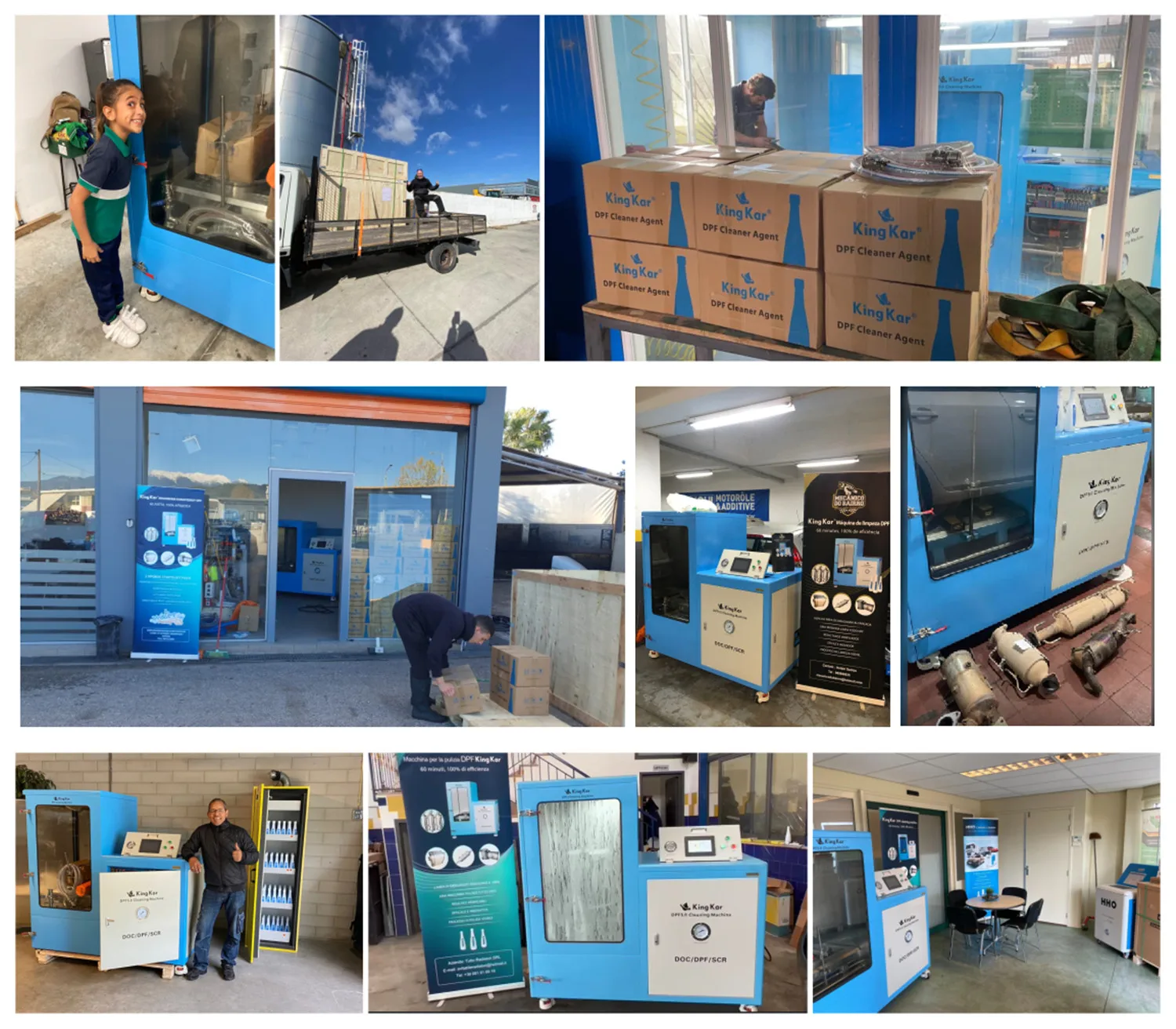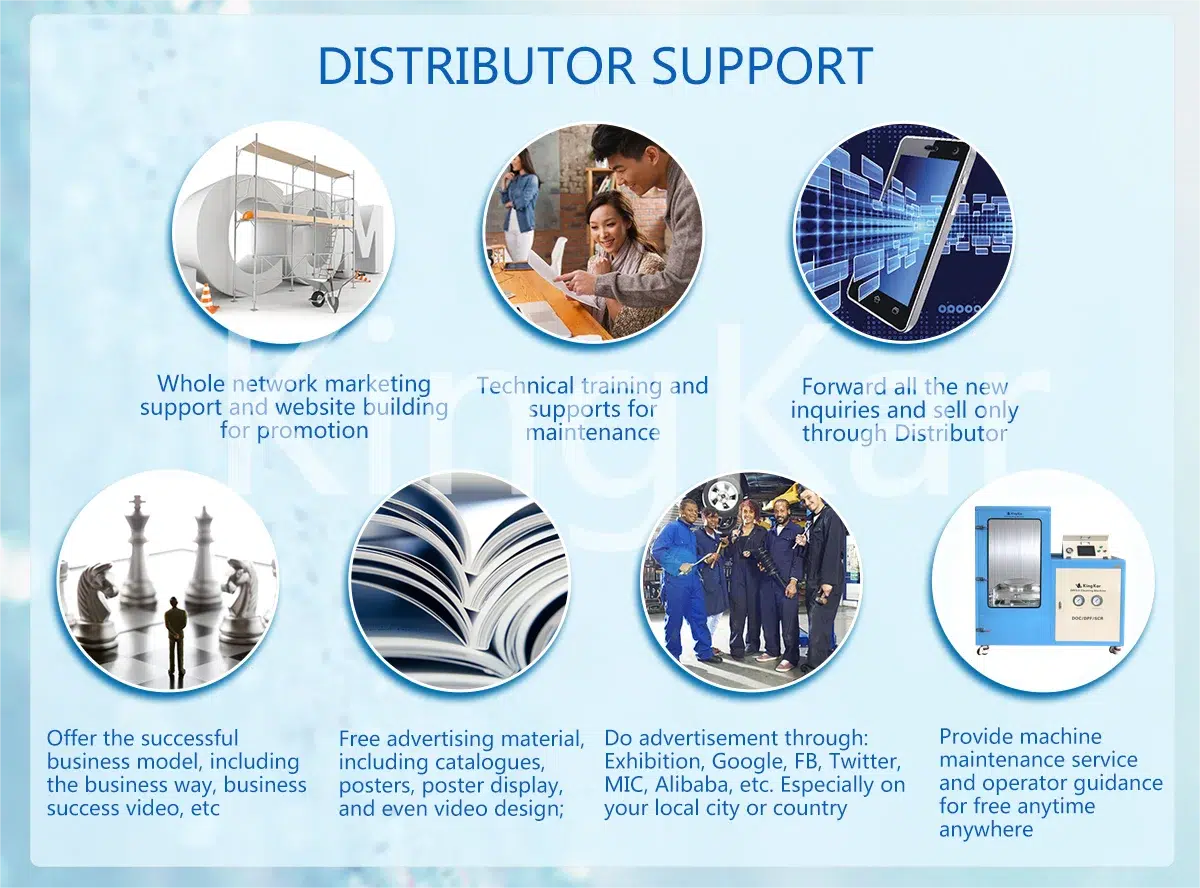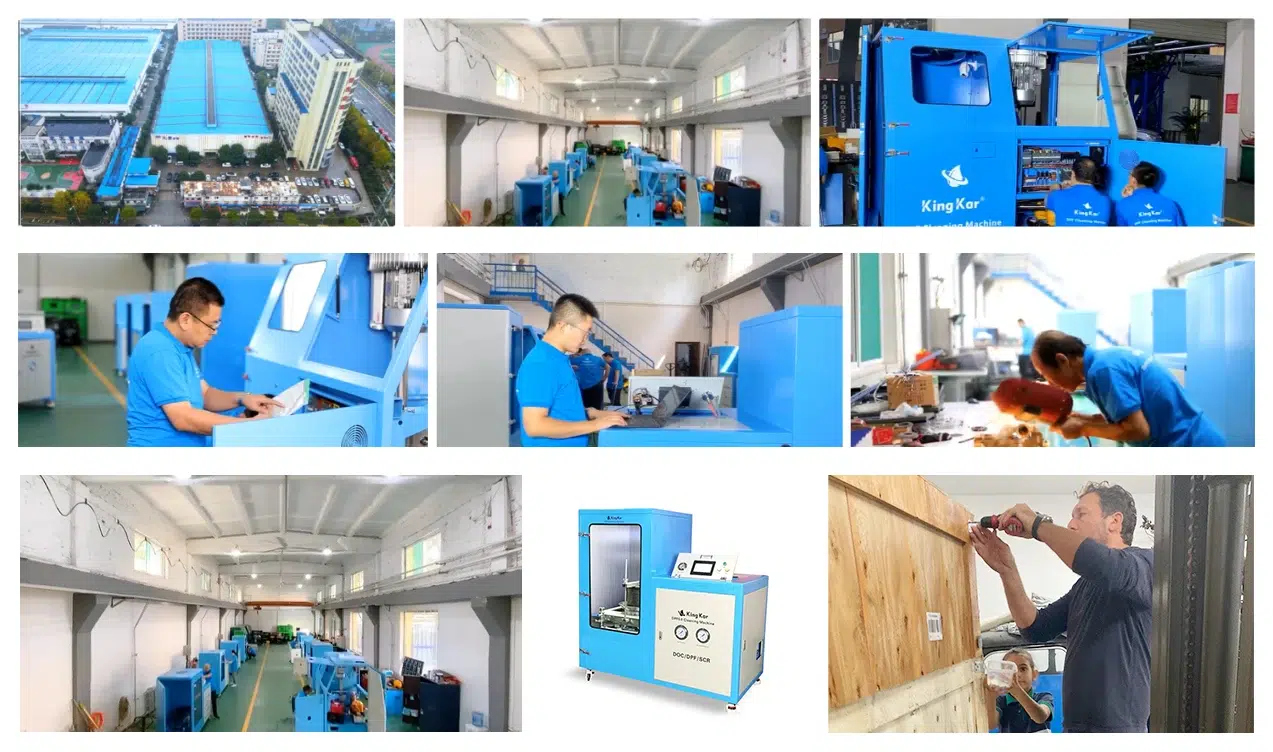The diesel particulate filter (DPF) cleaning machine is designed to clean and regenerate the DPF, which is an important component of the diesel engine’s emissions control system. The working principle of a DPF cleaning machine can be explained through the following steps:
- Cleaning solution preparation: The first step is to prepare the cleaning solution, which is a chemical solution that is designed to remove the accumulated soot and ash particles from the DPF. The composition of the cleaning solution may vary depending on the manufacturer, but it typically consists of alkaline compounds, surfactants, and other additives.
- DPF removal and inspection: The DPF cleaning process begins by removing the DPF from the vehicle. The DPF is then visually inspected for any physical damage or severe clogging that may require replacement rather than cleaning.
- Pre-cleaning: Before the actual cleaning process, the DPF is pre-cleaned to remove any loose deposits or debris. This can be done by either brushing or blowing air through the DPF.
- Soaking: The DPF is then soaked in the cleaning solution for a set period of time, usually between 30 minutes to an hour. During this time, the cleaning solution dissolves the soot and ash particles that have accumulated in the DPF.
- Pulsing: After soaking, the DPF is attached to the cleaning machine, which uses compressed air to pulse and agitate the DPF. This helps to loosen and dislodge any remaining deposits.
- Pressure and high-temperature cleaning: The DPF is then subjected to high-pressure water jets and heated in a high-temperature oven. This helps to flush out the remaining contaminants and burn off any remaining soot particles.
- Inspection and drying: Once the cleaning process is complete, the DPF is inspected again to ensure that all the deposits have been removed. The DPF is then dried to remove any excess water that may be present.
- Reinstallation: The cleaned DPF is then reinstalled in the vehicle, and the cleaning process is complete.
The DPF cleaning machine works on the principle of combining different cleaning methods to effectively remove the accumulated soot and ash particles from the DPF. The alkaline components in the cleaning solution help to dissolve the deposits, while the pulsing, high-pressure, and high-temperature cleaning methods effectively remove the loosened particles. This process not only ensures that the DPF is thoroughly cleaned but also helps to extend its lifespan and maintain optimal engine performance.



Here are some frequently asked questions about dpf cleaning machine :
- Why do I need to clean my DPF?
Diesel engines produce emission gases and particles that can clog the DPF over time, affecting the performance and emissions of the engine. Regular cleaning of the DPF is essential for maintaining efficient engine performance. - How often should I clean my DPF?
The frequency of DPF cleaning depends on various factors, such as the type of engine, driving conditions, and DPF capacity. It is recommended to check and clean the DPF at least once every 6-12 months. - Can I clean the DPF by myself?
It is possible to clean the DPF manually, but it is a labor-intensive and time-consuming process. DPF cleaning machines offer a more efficient and thorough cleaning solution. - How does a DPF cleaning machine work?
DPF cleaning machines use a combination of air pressure, heat, and cleaning solutions to remove built-up soot and ash from the DPF, restoring its efficiency. - Can a DPF cleaning machine damage my filter?
No, DPF cleaning machines are designed to clean the filter without causing any damage. However, it is important to use a reputable and high-quality machine to ensure proper cleaning. - How long does a DPF cleaning process take?
The time it takes to clean a DPF depends on the size and condition of the filter, as well as the type of cleaning machine used. Generally, it can take anywhere from 30 minutes to a few hours.
